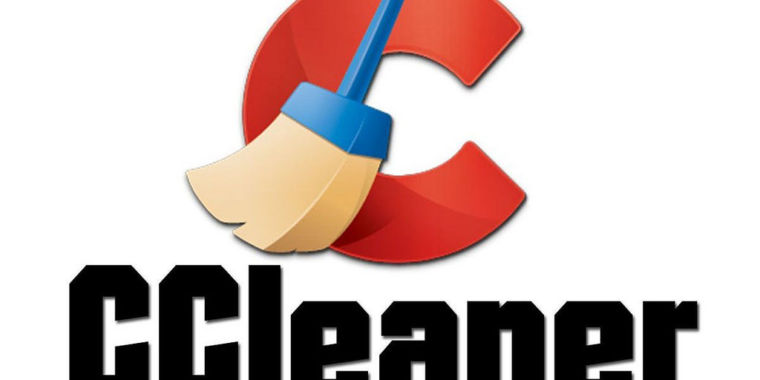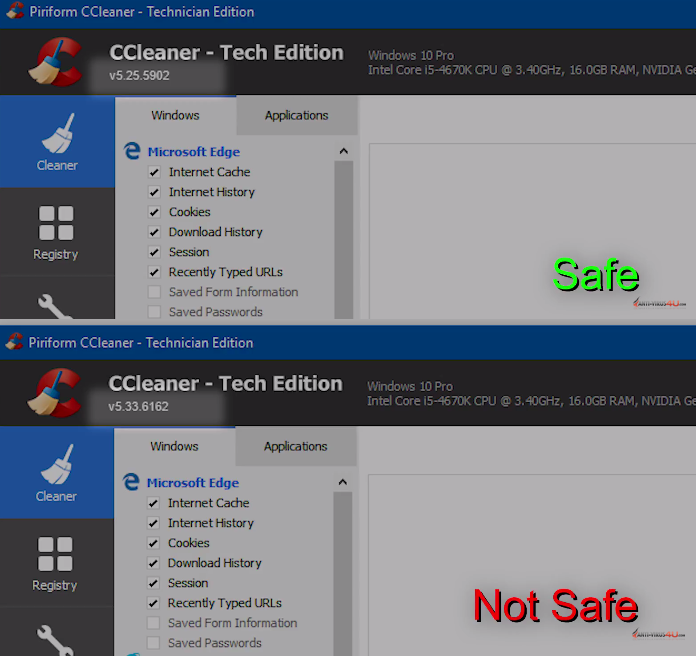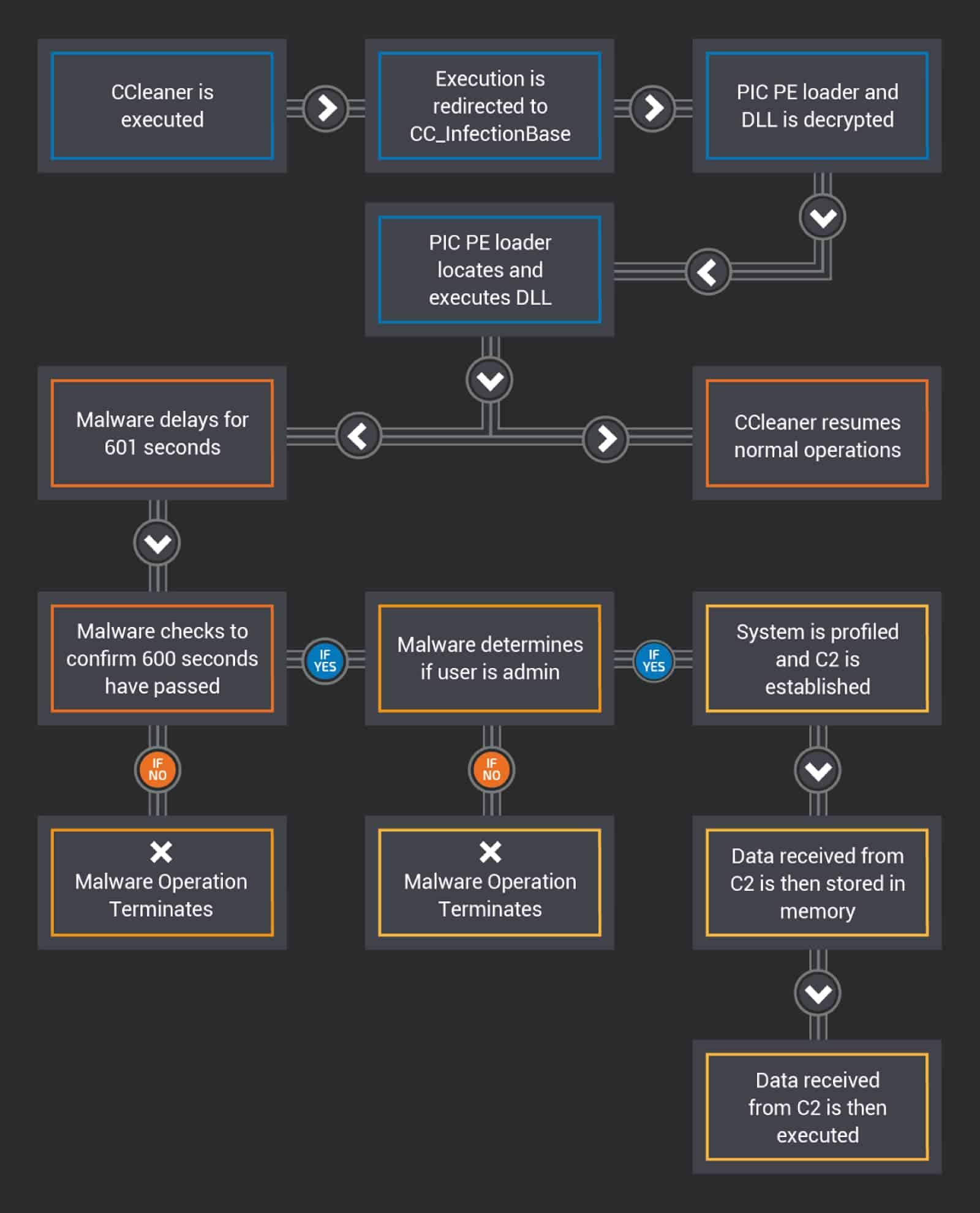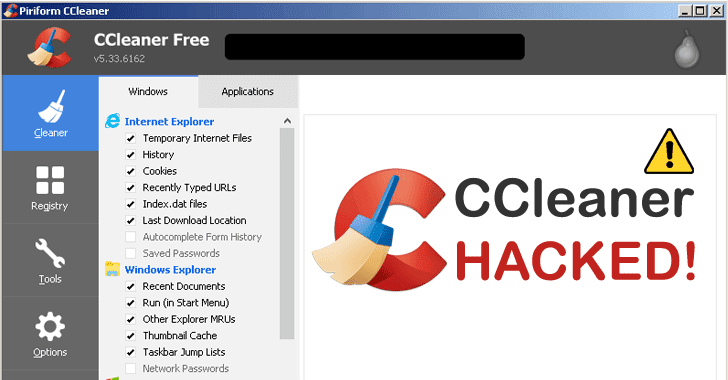
Ccleaner malware info update#
You may also see a message letting you know an update is available. If you don’t have the latest safe version, you’ll need to update your app. The version you have now will show in the upper left corner next to the CCleaner logo.ģ. The Windows 32-bit version of the 2017 releaseįinding out which CCleaner version you have is simple and can be done by following a few steps.Ģ.CCleaner or CCleaner Cloud - both released in August 2017.You may not have an infection, but it’s best to remove these versions to avoid any potential malware. If you have any of the versions in the following list, they’re the products infected with malware. To know if you’re running the secure version, you should check your CCleaner app.
Ccleaner malware info software#
You can also run your antivirus software to check for viruses or malware.Īt the time of this article, the latest version of CCleaner that’s safe to use is. If you’ve noticed your device has become slow to respond, you may have an infection. How do I tell if I have CCleaner malware?

On the whole, they very well may be, but incidents like this demonstrate that no one, not even a security vendor, can afford to take the topic lightly.In this article How do I tell if I have CCleaner malware? For better or worse, we tend to view such companies as intrinsically better at self-security than other firms. A security product is the last place people expect to find a compromised software version, both because of the nature of the program and the fact that a security vendor is responsible for writing and maintaining it. Without more to go on, it’s impossible to assign blame for the incident, but the hackers probably made off pretty well. We want to thank the Avast Threat Labs for their help and assistance with this analysis.”
Ccleaner malware info code#
The company describes the malware as a “two-stage backdoor capable of running code received from a remote IP address on affected systems.” Piriform notes that as of this writing, “we don’t want to speculate how the unauthorized code appeared in the CCleaner software, where the attack originated from, how long it was being prepared and who stood behind it. ”ĬCleaner is owned by Avast, the antivirus company, and has already issued a public apology and statement on the incident. Ideally this certificate should be revoked and untrusted moving forward. Troublingly, the malware was digitally signed with an appropriate digital certificate Talos wrote, “the presence of a valid digital signature on the malicious CCleaner binary may be indicative of a larger issue that resulted in portions of the development or signing process being compromised. From August 15 to September 12, the 5.33 version of CCleaner was infected by a malware payload. CCleaner is a popular utility, with an average of five million downloads per week (over two billion downloads cumulatively). Talos Intelligence has published a blog post detailing its research and findings, and they aren’t great. CCleaner Cloud users should have gotten an update already, but if you use CCleaner and don’t have automatic updates enabled, it would be a good idea to check the situation now. The infected payload affects two CCleaner products - CCleaner v and CCleaner Cloud v.


Worse, the company distributed infected versions of its products for nearly a month before realizing the problem.

CCleaner, the temporary file cleaner and registry optimizer of generally dubious utility in this day and age, has been flagged as containing malware.


 0 kommentar(er)
0 kommentar(er)
